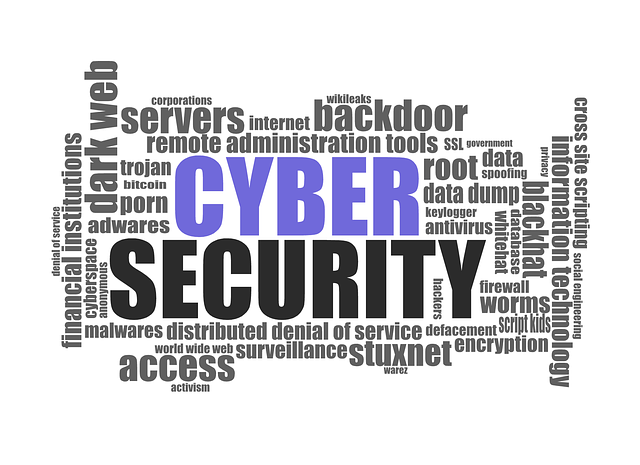Introduction: Why the Timeline Matters in Security Investigations
Security analysts spend a significant amount of time reconstructing what happened during an intrusion, and one of the most reliable ways to do this is through a structured timeline. When FireEye released its investigation material on threat groups using Mimikatz, one element that stood out was the timeline snippet describing how attackers deployed, executed, and expanded their reach using credential-theft techniques. This timeline wasn’t simply a list of events; it was a window into attacker behavior, operational patterns, and decision-making under real pressure.
Understanding what that timeline snippet represents helps professionals spot early indicators, connect subtle clues, and build stronger defenses. Even when individual events appear routine — a process launch, a registry modification, or a privilege escalation — their position in the chain can completely reshape the meaning. That is why the original report attracted attention: it offered an organized look at how attackers leveraged Mimikatz within a well-coordinated operation.
What the FireEye Timeline Snippet Represents
The timeline snippet from the FireEye Mimikatz report outlines a sequence of events observed during an intrusion where attackers relied heavily on credential dumping. While each organization faces its own unique threat landscape, this structured snapshot shows how experienced actors time their actions, hide between legitimate operations, and move quickly once they gain the initial foothold.
FireEye’s documentation is known for its emphasis on clarity, and the timeline snippet reflects that same precision. It presents an ordered list of timestamps, relevant host identifiers, observed commands, and tool interactions. This structured format gives analysts an exact view into when a credential theft attempt occurred, what methods were used, and how different systems were touched. Instead of offering broad descriptions, the snippet points directly to the operational flow of the adversary.
Key Milestones Commonly Reflected in FireEye’s Mimikatz Timelines
Although each case varies, FireEye timelines involving Mimikatz typically highlight several recurring milestones. These milestones form the backbone of how threat actors escalate access and prepare the environment for lateral movement. Examining them step-by-step often exposes attacker intent even when individual actions appear subtle.
To make these milestones easy to interpret, here is how they generally align in structured form:
Common Milestones (Column View)
| Stage | Activity | Purpose |
| Initial Access | Remote login events or exploit-triggered execution | Establish presence |
| Privilege Escalation | Mimikatz or token manipulation commands | Gain elevated rights |
| Credential Harvesting | LSASS memory access, dump files, or module loads | Extract credentials |
| Lateral Movement | Use of harvested credentials to access new hosts | Expand control |
| Persistence | Registry edits, scheduled tasks, or modified services | Maintain access |
These stages often appear close together on a timeline because attackers operate quickly after their first successful action. The snippet in the FireEye report makes this pattern visible by pairing timestamps with exact operations, helping defenders see the attack flow without guesswork.
How Mimikatz Appears Within the Timeline
Mimikatz typically leaves specific traces that can be recognized when placed into a chronological sequence. These traces become clearer in the FireEye report timeline because they appear among adjacent events that reveal attacker intent, such as privilege checks immediately before a credential extraction or remote execution immediately afterward.
Two patterns usually stand out:
1. Elevated Command Execution
Attackers rarely run Mimikatz without first confirming or achieving administrative rights. The timeline often shows privilege validation commands, security token adjustments, or attempts to bypass User Account Control. These preparatory steps aren’t noise — they are deliberate moves signaling that the adversary understands internal privilege boundaries.
2. LSASS-Related Activity
Any interaction with the LSASS process draws attention. On a timeline, you may see sequences such as process handle requests, memory read attempts, or module loads associated with credential dumping functionality. When these appear within a narrow window of privilege escalation, the larger picture becomes unmistakable: the attacker is collecting authentication material for future movement.
These patterns in the FireEye snippet act like landmarks, allowing analysts to understand both the timing and sophistication of the attack.
Why the Timeline Format Strengthens Investigations
One of the strengths of FireEye’s approach is its reliance on a clean, chronological format. Listing events in order—rather than grouping them by host or technique—provides a perspective that mirrors attacker behavior. Instead of seeing isolated incidents, analysts can trace cause and effect across the entire intrusion.
This format also makes anomalies easier to spot. For example, a PowerShell command executed at an unusual hour takes on greater meaning when immediately followed by credential dumping or remote session creation. The timeline helps analysts pinpoint that the suspicious behavior wasn’t an isolated mistake but part of a larger plan that unfolded across the environment.
Indicators That Commonly Surround Mimikatz in a Timeline
The timeline snippet often highlights several surrounding indicators that help validate the presence of Mimikatz or related credential-theft tools. These indicators provide context, showing what actions prepared the system for exploitation and what steps followed the credential capture.
These supporting indicators typically include:
- Unexpected process injections into system utilities
- Unscheduled service modifications
- Changes in authentication patterns on domain controllers
- Short-lived admin sessions initiated from unfamiliar hosts
- Rapid sequences of remote command executions
Each of these indicators might not raise alarms alone, but placed on a timeline, they draw a consistent picture of attacker workflow. The FireEye report emphasizes this perspective to help readers understand how skilled actors minimize their footprint while still achieving their goals.
How Timing Exposes Attacker Priorities
One of the most valuable insights from the FireEye timeline snippet is how it exposes the attacker’s priorities. The order in which commands appear often reflects the intruder’s confidence, level of access, and understanding of the environment. Early events usually focus on testing available permissions, locating high-value systems, and confirming where sensitive credentials might be stored.
As the timeline progresses, the attacker becomes more decisive. Actions tighten in sequence, gaps between events shrink, and the intruder’s workflow becomes more efficient. This shift is easy to spot in a structured log: wide intervals at the start, followed by clusters of activity once elevated access is achieved. In a security investigation, these clusters reveal when the attacker moved from exploration to execution, which is where Mimikatz tends to appear.
Correlation Between Mimikatz Events and Lateral Movement
FireEye’s documented cases show a clear pattern: once Mimikatz successfully extracts usable credentials, lateral movement typically follows within minutes. The timeline format highlights this transition, showing how attackers pivot quickly after acquiring privileged user data. This rapid shift is intentional; attackers want to minimize the window in which defenders can intercept or revoke stolen credentials.
Several behaviors consistently appear in this post-extraction phase:
- Remote service creation
- On-demand administrative logins
- SMB session spikes
- Use of credential-based scheduling commands
- New connections to domain administrators’ workstations
Placed chronologically, these details illustrate how attackers multiply their access across the network. The FireEye snippet made this especially clear by showing a condensed chain of events immediately after Mimikatz activity, leaving little doubt about how the intrusion spread.
Lessons Security Teams Can Draw from the FireEye Timeline
The timeline snippet offers practical lessons for defenders. While every environment is different, the behaviors shown in the FireEye report are not unique. They reflect habits seen across numerous incidents involving credential-theft tools, especially when actors are trying to blend into the noise of legitimate system activity.
Two lessons stand out:
1. Small Indicators Matter When Viewed in Sequence
A privilege escalation attempt at 2:43 AM might seem unimportant on its own. But when paired with credential dumping at 2:44 AM and remote authentication at 2:46 AM, the pattern becomes unmistakable. Individually, each event is easy to overlook; together, they describe the entire attack flow.
2. Fast Reactions Require Clear Context
Security teams can respond faster when they understand how attackers chain actions together. The more clearly an environment can recreate these sequences—especially through centralized logging—the easier it becomes to stop lateral movement before it affects core systems.
FireEye’s snippet is a strong example of how structured information allows analysts to detect attacks earlier, even when attackers use well-known tools like Mimikatz.
How Organizations Can Build Their Own Timeline Framework
While not every organization has the resources of a dedicated threat-intelligence firm, building a similar timeline framework is achievable with the right data sources. The goal isn’t to replicate the format exactly but to establish a consistent structure that captures relevant events in chronological order.
A functional framework generally includes:
Essential Data Sources:
- Endpoint detection and response logs
- Authentication logs from domain controllers
- PowerShell transcripts
- Scheduled task creation logs
- Process creation and command-line auditing
Recommended Structural Approach:
- Sort events strictly by timestamp
- Include hostnames and user accounts
- Add process-level detail only where meaningful
- Maintain a consistent level of granularity across all entries
Once implemented, this structure becomes a powerful tool—not only for responding to incidents but also for training detection rules and tightening baseline monitoring.
Using Timeline Analysis to Strengthen Detection Rules
One of the practical benefits of examining timeline snippets like the one FireEye published is the ability to improve detection logic. When analysts understand what typically happens before, during, and after a Mimikatz event, they can build rules that watch for the surrounding conditions instead of relying solely on the tool’s signature.
This approach reduces blind spots by identifying:
- Privilege escalation patterns that often precede credential dumping
- Memory access attempts that align with LSASS targeting
- Sudden administrative logins from unusual hosts
- Command-line sequences associated with credential extraction tools
By monitoring the ecosystem around Mimikatz behavior—not just the tool itself—analysts gain a more resilient detection strategy.
Conclusion: Why the Timeline Snippet Still Matters Today
The timeline snippet from the FireEye Mimikatz report continues to be a reference point because it demonstrates how attackers structure their movements long before—and long after—they run a credential dumping tool. It shows that intrusions are rarely defined by one command or one technique. Instead, they unfold as a sequence of decisions that become visible only when mapped into a structured timeline.
For defenders, the value lies in recognizing these patterns early. By adopting similar timeline methods, organizations can spot subtle activity, connect scattered indicators, and prevent lateral movement before it impacts critical systems. Though Mimikatz remains one of the most recognizable tools in intrusion investigations, it is the surrounding behavior captured in timelines—like the one FireEye documented—that provides the clearest picture of attacker intent.
For more quality, informative content, visit writewhiz







